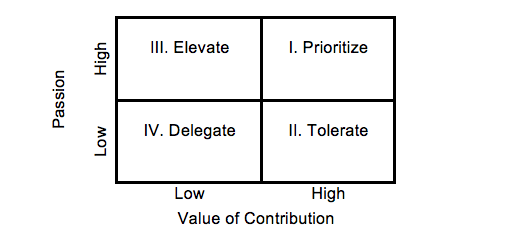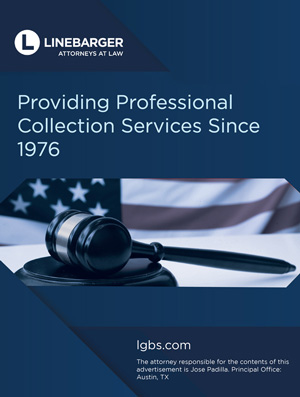Goats or Landscapes?
I am not a regular coffee drinker, but when I do indulge, it’s almost always an espresso (sometimes macchiato). While waiting in line recently at a local café, I was struck by the sheer number of choices in coffee—not to mention the other beverages, food items, and brewing kits in and around the counter. I can see how someone could walk in wanting a single-shot espresso and instead be distracted by the 16-ounce lemonade; smoked bacon, egg, and cheese sandwich; and travel mugs. The wide variety of coffee selections is indicative of the plethora of choices that we are encumbered with on a fairly regular basis. Consider the number of decisions that one makes in a given day, week, month, and year—from the trivial to the significant (or what is ostensibly inconsequential or meaningful). Perhaps now more than ever, there are a vast number of selections available, a wide range of choices to make. Many of these considerations are routine and mundane relative to the more weighty decisions a court administrator will ponder while managing a courthouse. But the basic problem is the same—the broad set of options that must be decided upon can be extraordinary and, at times, overwhelming.
According to one study noted by Bridget Janicki in her article “The Art of Choosing: How to Navigate a Sea of Possibilities,” a typical executive makes up to 139 decisions a week—half will take nine minutes or less; 12 percent an hour or more. An administrator’s leadership is evaluated on the basis of her decisions, so—unlike choosing between Arabica and Robusta—the choices she makes in the workplace can have serious repercussions. In light of the potential conflicts and the demands on the administrator’s time, is there any secret formula in filtering (no pun intended) out her choices? Interestingly, how she sets priorities is what will come to define her success both personally and professionally. In her book The Art of Choosing, Sheena Iyengar recommends leaders categorize pending decisions along relative priority. Those decisions and accompanying choices that fall outside a given threshold of import should be delegated. Navigating the breadth of choices is, therefore, guided by what the administrator decides is a priority, however specific it may be to her.
“Knock knock.”
I looked up from my desk to see that it was Toni, “Hi Toni. Come on in—you were running a little late, so I figured I’d keep working until you got here.”
“Actually, I got here about 10 minutes ago,” she replied. “But I told Chatnam at the front desk not to bother you. I picked us a couple of bowls of poke—tuna for you, salmon for me,” she replied. A traditional, sushi-grade fish salad served over rice and seasoned with pickled cucumbers, sesame oil, yuzu, and furikake, poke is a light, but savory dish for those who indulge (or care to experiment) in eating raw fish. Toni was always the exploratory type, especially when it came to dining. She would often say, “The simplest adventure we should all pursue is in trying new foods.” She considered food an important aspect of life that fostered one’s experiences and character by helping you become better acquainted with the culture of others. But while she would try just about any type of cuisine, she was a pescatarian at heart and convinced me to try this dish after trying it on vacation in Kauai. She even convinced a local Japanese establishment to serve it on a temporary basis. That was three years ago.
“I hope you got me white rice,” I said.
“Yes,” she said. “Even though brown is the healthier option, I ordered you the white.”
“Thank you—and don’t worry, there’s enough healthiness in the meal to make up for the difference,” I joked.
We made our way into the conference room, where folks in the office often ate their lunches. While Toni removed the menu stapled to the bag and unwrapped the wooden chopsticks, I was over by the coffee machine and water cooler looking through the assorted tea bags arranged as though in a card catalog in an open wooden box. “We’re running low on tea options. Looks like we have chamomile, mint, and orange pekoe. I’m going with orange pekoe—how about you?” I asked.
“Orange pekoe it is.”
As we got settled and began eating, Toni asked, “So what were you working on when I came knocking?”
“Nothing in particular—I was just reviewing my calendar because I have a few conflicts next week and I haven’t decided on what to do yet.”
“What are the conflicts?” she asked.
“I have a task-force committee, a speedy-trial subcommittee, and a teleconference meeting that are overlapping on Wednesday. They are distinct groups with different folks represented so it only poses a conflict for me. I also have to be at two places at the same time on Thursday.”
“I’d pay money to see that,” Toni teased.
“Yeah—the problem is that if I choose to attend one over the other and make arrangements to have our office represented by another person, I won’t be able to be directly involved from that point forward.”
“Why’s that?”
“Well, one group is meeting to begin interviewing candidates for the new supervisor position we created for the domestic violence unit—so as a matter of fairness you can’t come in midstream once that process starts. The other group will be surveying the layout of the jail annex before they demo it. Special arrangements were made to relocate the inmates that would ordinarily be in the space to another facility so that we could walk each cell block and corridor. The discussions that will follow will be based on having had the visual walk-through.”
“Hmm. I see the problem, but it’s really not an issue once you think through the priorities.”
“That’s part of the problem—all of it is a priority.”
“Are you, and when I say you, I mean are you obligated to be there in person or can you assign a responsible person to be there as a representative?” Toni asked. “I don’t imagine that the chief judge would purposely appoint you to something that has the conflict you’ve described.”
“No—she’s very flexible in allowing me to pick and choose these kinds of obligations.”
“Let me think about it for a minute,” Toni said as she sat in silence for a few moments and picked at a bite size portion of salmon. After taking a sip of her orange pekoe tea, she said, “I’ll need more information on your Wednesday conflicts, but go with the jail walk-through on Thursday.”
“But getting the right person to supervise the domestic violence unit is also very important.”
“Okay. Then do that instead,” Toni remarked.
“I can’t discount either of them.”
“Well, it’s either a goat or a landscape—but you can’t have both,” she said.
“What? What do you mean a goat or landscape?” I asked.
“Haha,” Toni chuckled at my puzzlement and began coughing. She took another sip of tea to clear her throat and said, “It’s an old saying that suggests when you own a home, you can either nurture a goat or have a nice landscape to the property, but you can’t have both.”
“Because a well-fed goat eats all the landscaping?”
“Exactly—it’s a matter of making choices in life.”
“Kind of like ‘you can’t have your cake and eat it too.’”
“Yes—but it’s about making choices based on the priorities you set for yourself. I think Ralph Waldo Emerson had a more sophisticated way of making the point though. He said, ‘For everything you have missed, you have gained something else, and for everything you gain, you lose something else.’ Think about it: There is always some loss in the choices you make—it can’t be all gain.”
“That’s true, but sometimes it’s still difficult to make a choice.”
“The key is in prioritizing those activities and things that are most important to you so that from your perspective, the gains outweigh the losses.”
“From my perspective.”
“Yes—because a greater gain from your point of view could be a greater loss from my perspective. Of course, we don’t always have the benefit of picking and choosing what we want to focus on, but when those opportunities are presented, you need to forgo those things that don’t help you achieve or maintain your personal mission and core values.”
“So, setting priorities requires some soul searching,” I concluded.
“What’s most important to you at this particular time—being personally in on that discussion about the jail or gauging the caliber of all the candidates applying for the supervisor position?”
“I’ll need to think about it for another minute, but it’s probably sitting on the hiring committee.”
“Just remember that you can’t do everything, and to the extent you try, you may eventually find that you’ve actually compromised what’s most important and in the end, accomplished less.”
Recent studies cited by Dale Carnegie showed that multitasking should be avoided to the extent possible. In fact, the findings demonstrated that multitasking actually makes one less efficient by complicating the flow and process by which tasks are accomplished. It can also increase stress and lower overall productivity levels. So, what is a court administrator to do in the age of “Fear Of Missing Out” (or FOMO, as is often tweeted) when there are a myriad of choices from which to focus on? When given the benefit of a choice, it comes down to establishing a clear list of priorities.
In the Harvard Business Review article “How to Prioritize Your Work When Your Manager Doesn’t,” Amy Jen Su tells readers to filter tasks along an interesting paradigm of four quadrants:

1. Quadrant I: Prioritize—these are the priority aspects of one’s work that interconnect the administrator’s highest-value contribution and greatest passions. These projects, tasks, and initiatives can be filtered by responding to two questions: 1) What is the administrator’s highest contribution? and 2) What is the administrator most passionate about? Responses to these questions will reveal what an administrator specifically advances in achieving the court’s purposes and responsibilities and what inspires her in the daily work.
2. Quadrant II: Tolerate—these are the parts of the work that sap the administrator’s energy and enthusiasm when she is engaging in those processes or responsibilities. As Toni would say, “Work can’t be all fun; they still have to pay you to report for duty.” Hence, there will be aspects of the work that come with the territory despite not being exciting. Those responsibilities must nonetheless be accepted for a manager to achieve her greater goals and passions.
3. Quadrant III: Elevate—these involve aspects of the work that the administrator enjoys doing, but are not viewed by others as the best use of her time. Under such circumstances, the administrator will want to carefully consider the value-added of her efforts together with her status in the court before determining whether she should be involved in those processes or if it is better to leave them to others in the organization. Su notes that if the chasm between what maintains one’s motivation and what the organization values grows, then it may be time for the administrator to move on.
4. Quadrant IV: Delegate—these incorporate the low-value and low-energy aspects of the job that can and should be delegated to others in the organization; to the extent that there is not a person to whom it can be assigned, the administrator should make the case for hiring additional staff to the extent feasible. Su notes, interestingly, that as the administrator develops in her career, tasks are not static. For instance, those that were once in quadrant I may have shifted to quadrant II or IV.
Whether the administrator decides to follow this framework or some other, categorizing and establishing priorities is fundamental to her success and fulfillment in working for the judiciary. Those priorities will be (should be) specific to the court that she manages, as well as what drives her own personal satisfaction. To that end, whatever paradigm or “system” is used, it is important that the administrator select those areas of focus to which she has the greatest interest, control, and flexibility so that the decisions rendered yield the most meaningful results.
Priorities, “to-do” lists, and blocking out time for doing uninterrupted work are regularly referenced in a variety of executive-leadership books and articles and suggest that budgets do not relate solely to pecuniary matters. Court leaders must also budget time vis-à-vis their responsibilities, commitments, passions, routine obligations, among other things—all of which should be organized in accordance with priority. Toni’s suggestion of focusing and prioritizing time is supported by the research that demonstrates the pitfalls of multitasking—that being, the futile attempt to try and do it all while accomplishing less, if anything. So just because the court administrator cannot do everything, does not mean she should not do something (and preferably that which is most important).
And those are just some of my musings on management.
ABOUT THE AUTHOR
Giuseppe M. Fazari has been musing about management concepts and practices throughout his career as an administrator, consultant, and academic. Contact him at fazarigm@aol.com.



